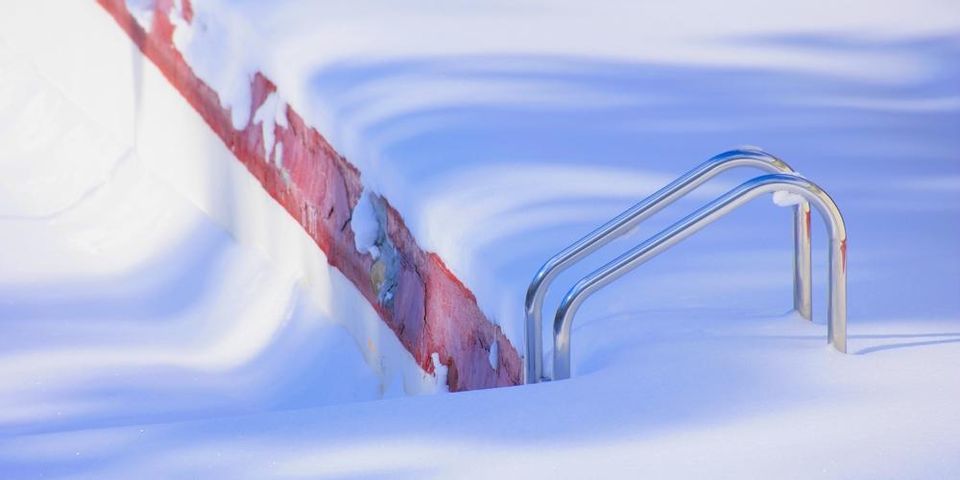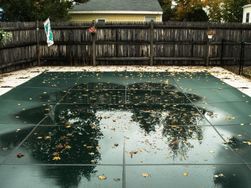Winter Swimming Pool Maintenance Tips for Maintaining a Low Water Level

One of the most important parts of swimming pool maintenance in the winter is monitoring the water level in your pool. This is necessary to prevent ice from getting up on the tile and coping, where it can freeze and loosen or break the tile or coping. Distinctive Swimming Pools recommends keeping swimming pool levels at least six inches below the tiles or skimmer in January and February and three inches in March on concrete pools Vinyl and fiberglass pools should be maintained at the bottom of the skimmers.
The Washington Depot, CT, swimming pool contractors offer the following tips for keeping the water at a safe level:
-
Drain & Prepare Pool Equipment: The first step of swimming pool maintenance is draining the filtration system, removing or cleaning the filters, blowing out all the pipes and plugging them. When possible, store removable equipment indoors over the winter. Some pool owners may also use skimmer covers for extra protection on vinyl lined or aboveground pools which helps prevent the water from getting into the skimmers. The better you prepare your equipment, the less you’ll need to worry about water freezing and damaging your equipment.
-
 Cover Your Pool Tightly: Once you’ve drained your pool, protect it from winter precipitation and debris with a winter cover or leaf net. For the easiest time cleaning out the snow, leaves, and standing water from the cover, you may consider using an air pillow underneath — especially for an above-ground pool. To avoid leaves and debris from getting into your pool, keep it sealed as tightly as possible; the best type of cover to use over the winter is a mesh safety cover. While the water level shouldn’t be left too high, it also shouldn’t be so low either. Most covers are designed to use the water in the pool to support it. Having the water level too low may cause the cover to rip, springs to break, stakes fly out of the ground or deck anchors to pull out.
Cover Your Pool Tightly: Once you’ve drained your pool, protect it from winter precipitation and debris with a winter cover or leaf net. For the easiest time cleaning out the snow, leaves, and standing water from the cover, you may consider using an air pillow underneath — especially for an above-ground pool. To avoid leaves and debris from getting into your pool, keep it sealed as tightly as possible; the best type of cover to use over the winter is a mesh safety cover. While the water level shouldn’t be left too high, it also shouldn’t be so low either. Most covers are designed to use the water in the pool to support it. Having the water level too low may cause the cover to rip, springs to break, stakes fly out of the ground or deck anchors to pull out. -
Do Not Empty The Pool: You may be wondering if it’d be easier to completely drain the pool instead of just keeping the water level low. Unless you’re completely disassembling your pool for the season (e.g. certain above-ground pools), it’s important to leave the water in the pool. In a vinyl pool, the liner will dry out and get damaged due to its exposure to the air and elements. In a concrete or fiberglass pool the pool may “pop” out of the ground due to hydrostatic pressure from ground water. An empty pool is nothing more than a boat in the ground at that point. Leaving at least six inches of space between the water and the bottom of the tile in a concrete pool in January and February and three inches in March will allow enough room for the expansion of the water as it freezes. Keeping the water level at the bottom on the skimmer in a vinyl lined pool and fiberglass pool will ensure protection for the liner and shell as well as the coping on the pool.
Need help with swimming pool maintenance this winter? Distinctive Swimming Pools would be glad to help. Call the company at (860) 868-3622 to schedule service, or visit them online to learn more about their pool services.
About the Business
(3 reviews)
Have a question? Ask the experts!
Send your question

